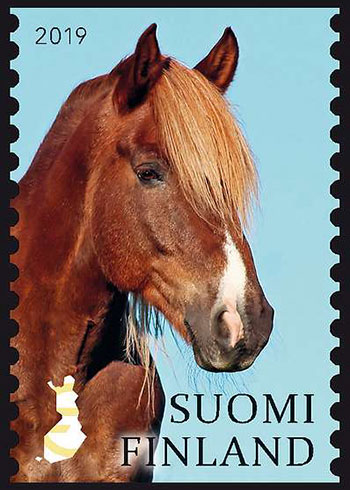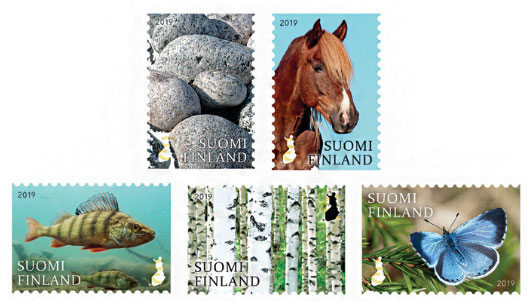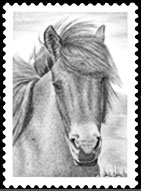
On June 5, Finland Post presented the second issue of definitive stamps in the National Nature Symbols of Finland series.
Many countries choose a single animal, plant, or bird as their national symbol, but Finland, whose people are known for their love of their native nature, has not one or two, but many more. Finland has a national animal and bird, as well as a fish, tree, flower, insect, and rock, plus national species of various domestic animals.
The seven main Finnish natural objects (animal, bird, flower, fish, insect, tree, and rock) were designated national symbols as a result of a series of nationwide votes conducted in the 1980s and 1990s by the Finnish Association for Nature Conservation. The era of online voting had not yet arrived, and tens of thousands of people voted by mail. Subsequently, other votes on similar themes were held; for example, in 2017, the Finns chose a national butterfly.
Naturally, the country's national nature symbols were bound to appear on postage stamps.

In 2018, artist Stiina Hovi designed five stamps for the first series of this issue: they depicted the national animal (the brown bear), a bird (the white swan), a flower (the lily of the valley), an insect (the ladybug), and a dog – the Finnish Spitz. This was a series of standard coil stamps for domestic use, printed in rolls of 100 stamps.
In 2019, a continuation of the series was released, this time featuring the following national symbols: perch, blue butterfly, white birch, granite boulders, and the Finnish horse.

The origins of the Finnish horse are unknown; the breed has existed for approximately 3,000 years. Horses were used by local residents as draft and riding horses, primarily in forestry and agriculture, and for hauling heavy loads.
The Finnhorse studbook was established in 1907. It is believed that these horses were originally small forest-type horses; in the 19th century, their conformation, height, and speed were significantly improved by incorporating Orlov Trotters and Norfolk horses.
The Finnhorse population peaked in the 1950s, reaching over 400,000. However, by the 1960s, commercial use of these horses had virtually ceased, and the Finnhorse population declined sharply.
Today, the Finnhorse is bred to produce a versatile horse suitable for saddle, harness, racing, and heavy draft. There are two distinct breed types of Finnhorses: light, dry trotters and heavier workhorses. In addition to trotting at racetracks, Finnhorses are used for recreational riding and equestrian sports.
Перейти в каталог
I apologize for any errors or inaccuracies


